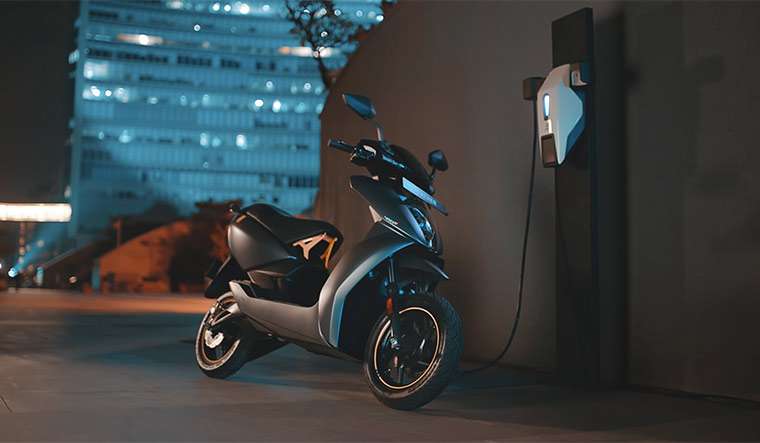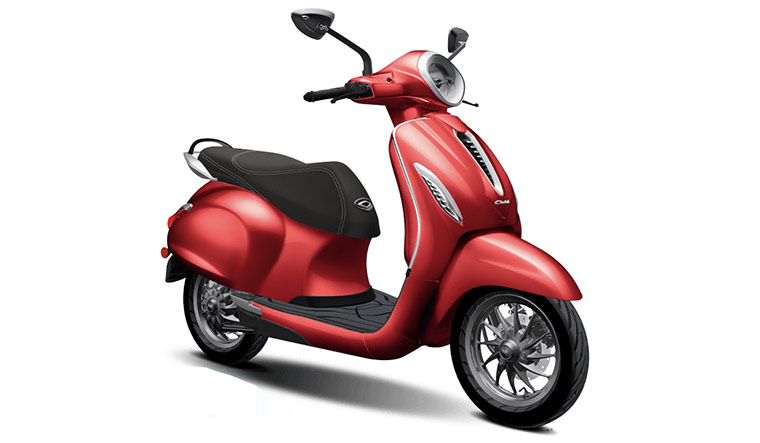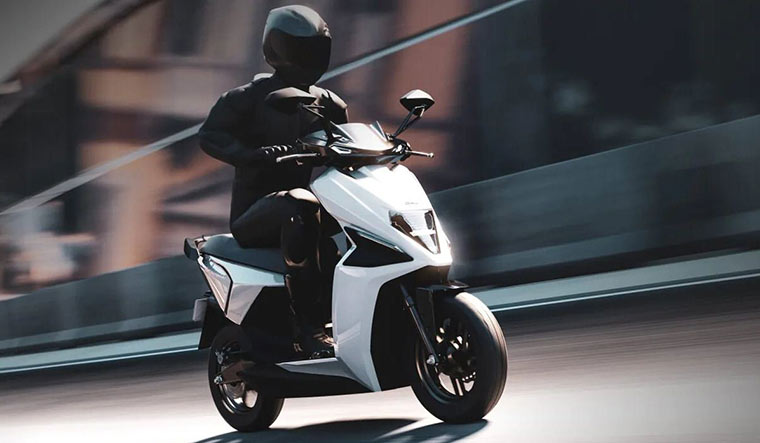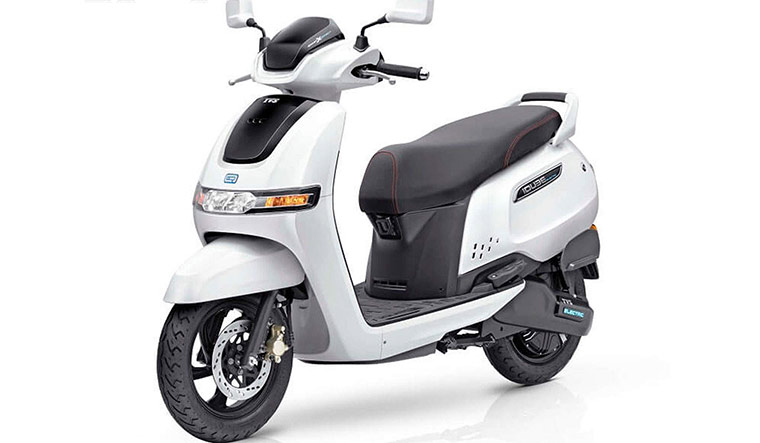Ashish Agarwal, a Varanasi-based businessman, uses a 2019 model Hero electric scooter for his daily commute. He says it is more convenient, easier to maintain and cheaper to ride than a conventional scooter. “Its pickup speed is faster than a petrol scooter and maintenance is minimal,” said Agarwal.
Most users of electric scooters share Agarwal’s opinion. And many others are planning to shift from petrol scooters because of the exorbitant fuel prices. There has been a rash of e-scooter launches in the past year; by startups and traditional biggies, at different price points. The hype rose to a crescendo on Independence Day 2021 when Ola Electric launched its e-scooters—Ola S1 and Ola S1 Pro.
Few businessmen are as optimistic about the future of e-scooters as Bhavish Aggarwal, the founder of Ola, who is on a mission to make all two-wheelers in India electric by 2025. “Ola is committed to leading the electric mobility revolution in the country and we have exuded the capability to build in India for the world,” he said at the launch.
It might not be that easy, though. “It took more than a century to develop an ecosystem around internal combustion engine (ICE) vehicles,” said Rishi Bhatnagar, president of Aeris Communications, which provides IoT solutions to many electric scooter companies. “It may take time before a matured ecosystem develops around electric vehicles as they have been around only for a decade.”
As per CRISIL Research, the high-speed electric two wheeler category expanded by almost seven times between April and July as compared with the same period last year. As a result, the penetration of electric two wheelers surged from 0.2 per cent of total scooters sold to 0.7 per cent in the period. “Although only 47,000 electric two-wheelers were sold till July in the fiscal year 2022, Ola Electric alone has received more than one lakh pre-bookings within 24 hours of starting bookings. This highlights the underlying latent potential in electric two-wheeler demand,” said Ajay Srinivasan, director, CRISIL Research.
Experts at CRISIL said petrol prices crossing the psychological barrier of 0100 a litre had been a critical factor in driving interest for electric vehicles. The increase in incentives from the Central government and additional incentives from states like Delhi, Gujarat and Maharashtra have drastically brought down the prices of electric scooters. “As per CRISIL Research’s assessment, Ola S1 is almost 20 per cent cheaper to own even at annual usage of 6,000km at 0100 a litre of petrol for a vehicle registered in Delhi. Even if petrol prices were to correct to 085 per litre, electric scooters are expected to maintain their affordability lead over ICE counterparts at an annual usage of 6,000km,” said Srinivasan.
The manufacturers are all upbeat about the market. “Of late, we have been getting three to four times more inquiries. We have witnessed a surge in sales in the range of 1.5 to 2 times,” said Nilay Chandra, director of charging infrastructure at Ather Energy, a Bengaluru-based e-scooter manufacturer. Ather’s 450 Plus and 450X were game-changers in the segment with their excellent build quality and connectivity features. It is currently present in 18 cities. Chandra said it would be in around 100 cities by the end of 2022-23.
Most makers of high-end e-scooters are following Ather’s playbook, but also trying to offer something extra. Bengaluru-based Simple Energy, for instance, recently unveiled its first model, the Simple One, with Bluetooth connectivity, geo-fencing, over-the-air updates, onboard navigation and many other features and it claims to have almost twice the range of the Ather 450.
Most of the high-end electric scooters are not sold as standalone products. “We have created a digital ecosystem for the consumers,” said Manu Saxena, vice president (future mobility), TVS Motor Company, which recently launched its first electric scooter, the iQube Electric. The company is also building the EV business around smart products aided by technology. “Our strategic tie-ups with government bodies like CESL and other public charging partners are towards building a network of public charging infrastructure that will help us expand into the next set of cities in the future,” said Saxena.
Though manufacturers are vocal about expansion plans, there are concerns that e-scooters may remain an urban phenomenon. “Scooter ownership is not widely prevalent in tier III cities given their relatively higher cost of running as compared with motorcycles, and (because of) poor quality of roads. In case of electric scooters, the lack of availability of sustainable home charging and higher cost of acquisition compared with ICE motorcycles are likely to be the key impediments to their adoption in rural areas,” said Srinivasan.
Availability of finance is another major challenge. Financiers are not yet comfortable lending to EVs as there is no reliable way to assess the value of repossessed vehicles, with battery price being a major component of their value. “Higher acquisition cost along with challenges on financing side were hurdles,” said Srinivasan. “With additional government incentives, additional state incentives and attractive pricing by Ola and Simple One, acquisition-cost related concerns are resolved to a great extent but financing scenario still remains a challenge.”
The charging infrastructure could be a challenge even in urban areas. “In urban clusters, where most of the people live in apartment complexes, dedicated charging ports in parking space is a major challenge,” said Jinesh Gandhi, research analyst at Motilal Oswal Financial Services. “The charging infrastructure in rural and tier II and III cities also needs to develop. In rural areas where many people commute 50km daily on an average, the scooters may not take off in a big way.
Much of the consumer anxiety, however, stems from a high upfront cost. While the running cost of e-scooters is lower, India’s price-sensitive consumers seem reluctant to pay a higher initial price for e-scooters. “A higher depreciation rate compared with fossil-fuel vehicles also influences consumers’ decision to stay away from EVs,” said Samarth Kholkar, co-founder and CEO of Blive, an EV experiential platform. “EVs can cover a limited distance on a single charge and thus have a higher dependence on charging infrastructure. India needs a strong network of charging stations for the EV market to prosper.”
One way to tackle the charging infrastructure problem is developing a common platform for fast-charging. “Companies are slowly opening up patented technology to help bridge the gaps in the ecosystem,” said Kholkar. “For instance, Ather Energy recently announced opening its patented charging infrastructure tech to all e2W makers to enable a common charging infrastructure, which is a great step towards building a robust electric mobility ecosystem.”
India is the largest market for two-wheelers in the world, and it offers a huge opportunity for manufacturers of electric scooters. That is why all big two-wheeler manufacturers have grand plans for the segment. Once the likes of Hero MotoCorp (a launch is imminent), Bajaj (launched the electric Chetak), Suzuki (planning an electric Burgman Street) and Honda are in the mix, the segment may well get over the hiccups and have a smooth ride.






